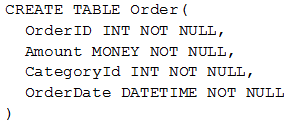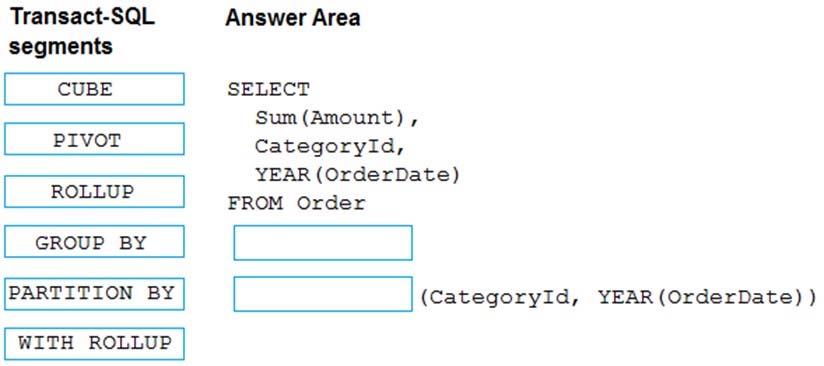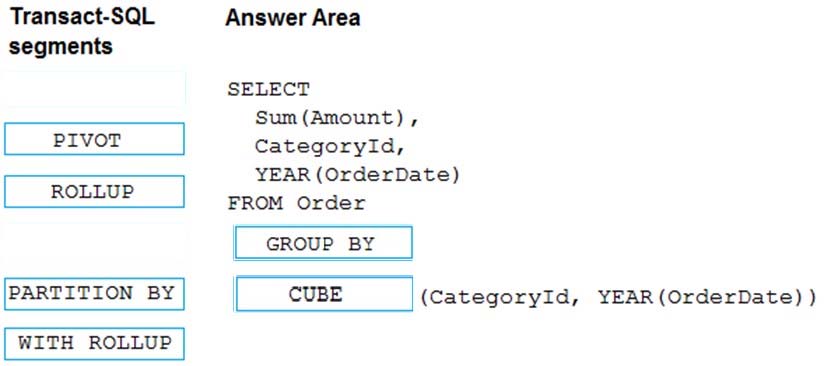

DRAG DROP -
You are a database administrator for an online retail store. You create a table to track orders by running the following Transact-SQL statement:
You need to create a report that includes the following information:
✑ Total sales for each year
✑ Total sales for each category
✑ Total sales for each category per year
How should you complete the Transact-SQL statement? To answer, drag the appropriate Transact-SQL segment to the correct locations. Each Transact-SQL segment may be used once, more than once, or not at all. You may need to drag the split bar between panes or scroll to view content.
NOTE: Each correct selection is worth one point.
Select and Place:

mcfuw
Highly Voted 5 years, 5 months agoRisheesh
5 years, 5 months agoMarshy
5 years, 3 months agodamirbek369
Most Recent 5 years, 7 months agomlourinho
5 years, 7 months ago